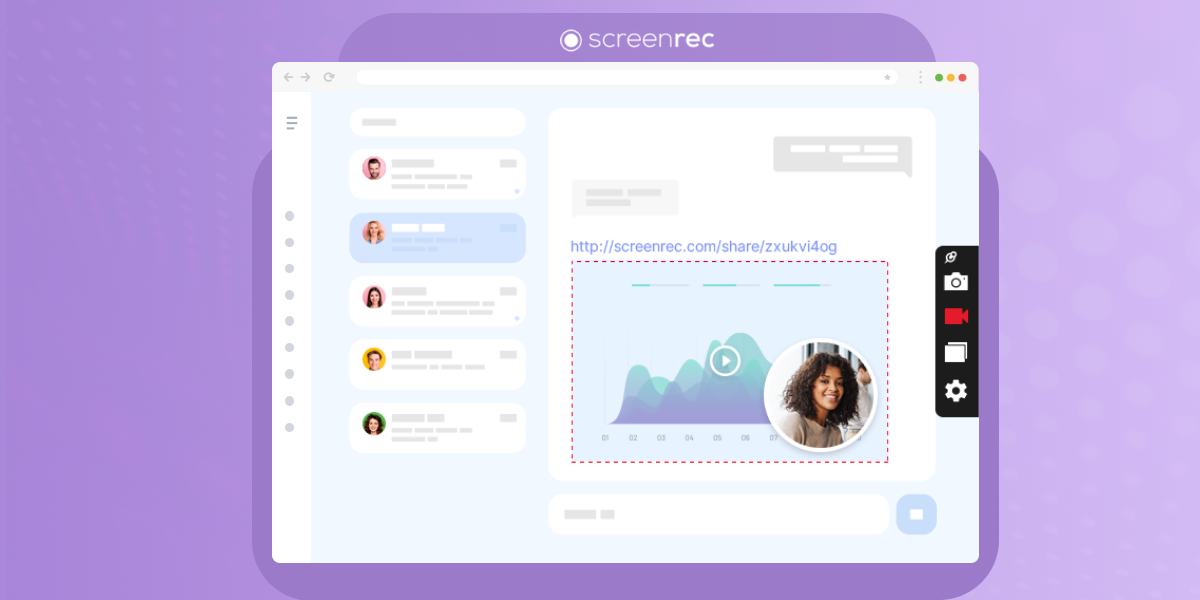How To Build A Positive Remote-First Work Culture
The work environment has always evolved alongside technology, and businesses that don’t adapt get left behind. The last 30 or so years have seen a flurry of change, but perhaps the biggest one came with the coronavirus pandemic.
Pretty much any job that could be done using only a computer was now moved into a remote setting, allowing employees to work from anywhere. Two years later, the remote work movement is not slowing down. Permanent remote work has aided industries such as freelancing.

You might already be outsourcing some work to remote freelancers (if so, make sure you know how to fill out a W-9), but now things have shifted even more in the direction of remote work. Statistics say 52% of employees worldwide work from home once a week, and 68% do so at least once per month. This makes many business owners wonder if having an office even makes sense today. And now, company culture in remote working is a new problem to be solved.
It seems increasingly likely that the future of work will be remote companies. If your business is to keep up with the times, it needs to start embracing remote work. But how do you go about making this change? We’ll show you how to build a positive remote-first work culture and walk you through how you can make the most of a remote workforce.
What is a Remote-First Work Culture?
You are probably familiar with the term “work culture”. It’s a term that gets thrown around a lot in business. Effective company culture in remote work is the next step — your organization should prioritize remote work for its employees.
But a positive remote-first work culture can’t be achieved simply by having your employees work remotely. Remote work needs to feel as natural as working in a traditional office environment.
So, what is a remote-first work culture?
A positive remote work company culture should embody your business's values, approach, and ethics. It should help employees feel connected even though they may be thousands of miles away in different time zones and continents. It should foster a sense of belonging, just like traditional corporate culture does.
The problem is, remote work culture building can be tricky. Especially if you’re a business transitioning from on-site to remote working.
Where should you begin? Let’s start with the basics.
Be Aware of the Challenges

There are lots of benefits to remote work and culture. Employees working virtually are 35% to 40% more productive than those working in an office. These numbers probably make you want to start working to become a remote-first company ASAP.
But before you do, it’s important that you recognize some of the challenges in your way. After all, navigating these barriers is key to building a positive remote-first work culture. Here are a few challenges that you’ll need to be aware of.
Poor teamwork
Collaboration is at the heart of every strong team. But creating strong teamwork remotely is much harder. In the office, workers see each other every day. They have time to build positive relationships and work better in teams. This is harder to achieve remotely, meaning that teams working from a distance are often less effective.
Feeling Out of the Loop
Remote workers generally get fewer opportunities to socialize. This is because there is no face-to-face contact, and people can feel lonely. Additionally, without effective communication from leaders, your team members can also feel directionless. This can lead to an uninspired and unmotivated workforce.
Loss of Routine
A traditional 9-5 job provides a set schedule for employees. Meetings are at specific times, and people work within a specific structure. Of course, working remotely, this schedule is lost. Some employees will enjoy this new freedom, but many will find it difficult to function without a routine.
Lack of Training
Training is difficult (although not impossible) remotely. You might find that staff aren’t given the right knowledge to carry out their tasks correctly. Imagine, for example, that your marketing team needs to transition to mapping micro funnels within their sales funnel. That’s a different approach to understanding the customer journey and customer satisfaction that requires specific training and software setup. It may be difficult to organize remotely. In such cases, employees may be left without a clue as to how to do their work and feel frustrated.
Building a Remote-First Work Culture
With all that established, how do you go on to build a positive remote-first work culture? Companies with remote work culture often have vibrant ongoing remote employee engagement. Without further ado, here are some tips that will come in handy to create a culture you would love.
Maintain Constant Communication

As we mentioned, for a remote-first culture to be successful, remote work should feel completely natural. Creating strong lines of communication is an essential first step in this. But, as we’ve seen, maintaining communication remotely is difficult. To do so, you’ll need to take steps to fully digitize your workforce.
Digitization means investing in the right conferencing software for team communication. You’ll want an option that includes some of the following features:
- Video conferencing and audio calling
- Video emailing
- Instant chats
- File sharing
- Group calling
With the above features available under one roof, communication will be much simpler. Employees will have the facilities to collaborate more easily, and group chats help to ensure that everyone is kept in the loop. Additionally, with a tool like ScreenRec, they can instant short video messages and screenshots, making internal communication more efficient.
Give Employees Time To Get To Know Each Other

Of course, communication shouldn’t just be limited to formal channels. If your employees are to work together effectively, they need to get to know each other and get along.
This is much more easily accomplished from the office. You can host fun events that allow people to let their hair loose and get to know each other better. Breaks provide a chance for people to chat and build stronger relationships.
There’s no doubt that it's more difficult for remote employees to socialize, but it shouldn’t be impossible. You’ll need to create opportunities for socializing and explore culture ideas for remote work. This could mean creating a virtual break-out room for people to join during their breaks.
Your team could also share virtual happy hours or virtual drinks over a video call. Company culture and remote work can advance greatly when the working space brims with employees.
Give Employees Freedom
The impact of remote working on company culture is multi-faceted. Your remote workforce can’t operate in the same way as employees working in an office. Yet, too many businesses fail to alter their approach for remote teams. This is one of the biggest barriers to creating a positive remote-first culture.
The best example is when an organization forces remote workers to work to strict schedules. Working remotely, employees should have the freedom to set their own hours. It’s important that you avoid micromanaging, as this is a surefire way of damaging relations with your employees.
Ultimately, you should be more interested in the quality of the work of your employees. If they perform better when setting their hours, let them. If you give your employees more freedom, they’ll reward you with greater enthusiasm.
One way to measure this is to do employee satisfaction surveys and analyze the data to understand how happy your employees are. Using an HR algorithm can come in handy in these cases because it processes the results for you and gives you insights.
Don’t Neglect Onboarding

Onboarding is critical for new employees. It gives them a chance to ask questions and better understand your business. If you don’t allow enough time for onboarding, your employees won’t have the knowledge to do their job properly. Worse, they won’t feel valued and connected to their colleagues.
For example, let's imagine that one of the roles of your employee is to monitor your website using Google Analytics 4 (GA4). The software is packed with features and can be difficult to work with as a beginner. You might need to take the time to familiarize the new employee with the features of GA4.
Onboarding is also important if you’re keen on your employees sticking around. Employees who have experienced an effective onboarding process were likely to stay with the company. Studies show that employees are 18 times more likely to be committed to their employer if properly onboarded.
But despite this long list of benefits, many employers still struggle with onboarding. The task is even more difficult when dealing with a remote workforce. You might be wondering where the best place to begin is.
First, you’ll need software that facilitates onboarding. Then, begin creating a digital space for resources and make these easy to access. Workers might prefer to read or watch onboarding materials in their own time using a cell phone. Make sure that they can do so.
Recognize Your Employees
As we’ve mentioned, working remotely can lead to workers feeling left out of the loop. If they are consistently putting in long hours of work and getting little in return, it can lead to frustration. Make sure that you let your employees know that their contributions are valued.
Allow time to show appreciation for the employees that are working the hardest. An “employee of the month” scheme can be a great way to get people motivated. This is especially the case if you throw in the prospect of a reward.
Start Building Your Remote-First Culture Now
Workplace culture is changing globally, and the direction is clear; start adapting to remote work now, or risk getting left behind. Of course, building a positive remote-first culture will take time and will require a lot of effort. Digitization should be at the front of your efforts. Make sure that your workers have the tools to carry out remote work in a way that is as natural as possible.
Use this article as a guide and start planning how you can become a remote-first company. Remember that while the process might be daunting, the rewards can be huge. So, start building your remote-first culture now. You won’t regret it.
Further Reading:
- Hybrid Vs. Remote Work: Which Is Better? What Is The Future?
- How to Engage Remote Employees with Unique Virtual Events
- 5 Proven Ways To Boost Remote Team Productivity
- 15 Awesome Ways To Boost Remote Employees Motivation
- Virtual Team Building Activities: 43 BEST Ideas for Work
- How to Give Employees Structure Without Stifling Them













![[Guide] Effective Communication In The Workplace](https://screenrec.com/assets_dist/screenrec/media/communication-workplace/communication-in-the-workplace.jpg)
DON’T MISS OUT
Get updates on new articles, webinars and other opportunities: